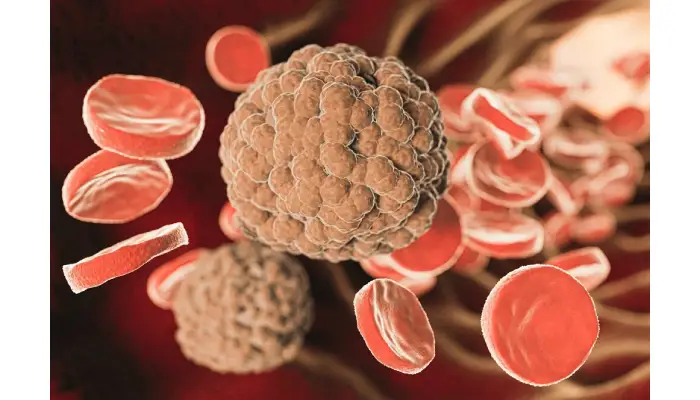
Understanding the Benefits of Umbilical Cord Stem Cells
Umbilical cord stem cells are hematopoietic cells found in the blood of the umbilical cord and placenta, with great potential for medical treatment. They can regenerate damaged tissues, making them useful for conditions like heart disease or spinal injuries. These stem cells help treat blood disorders such as leukemia and have a non-invasive collection method, posing no risks to mother or baby. Their abundance offers efficient transplantation options. Notably, they show lower chances of graft-versus-host disease and could even aid in genetic disorder therapies. While still limited by match availability and the need for more trials, their future applications are exciting.
1. Definition of Umbilical Cord Stem Cells
Umbilical cord stem cells are a special type of stem cell found in the blood of the umbilical cord and placenta. These cells are hematopoietic stem cells, which means they have the unique ability to develop into various types of blood cells. This capability makes them vital in medical treatments, especially in the context of regenerative medicine and the treatment of blood disorders. Unlike stem cells from other sources, umbilical cord stem cells are collected after birth during a non-invasive procedure, posing no risk to either the mother or the newborn. Their collection is simple and safe, allowing families to preserve a rich source of these valuable cells for potential future medical use.
2. Key Benefits of Umbilical Cord Stem Cells
Umbilical cord stem cells offer a range of significant benefits in modern medicine. One of the most notable advantages is their role in regenerative medicine, where they can help repair damaged tissues and organs. This capability is being explored for various conditions, including heart disease and spinal cord injuries.
These stem cells are also crucial for treating hematopoietic disorders like leukemia and lymphoma. They can be used in transplants to restore healthy blood cell production, offering hope to patients battling these severe illnesses. The non-invasive collection process is another major benefit; obtaining stem cells from umbilical cord blood does not pose any risk to the mother or child, unlike the more invasive methods used to extract bone marrow.
Umbilical cord blood is a rich source of stem cells, containing a higher concentration than most adult sources, which enhances its efficacy for transplantation. Additionally, the risk of graft-versus-host disease (GVHD) is lower with umbilical cord blood transplants, reducing complications during recovery. Research also suggests that these stem cells have the potential to address genetic disorders by providing healthy cells to replace defective ones.
Moreover, umbilical cord stem cells can assist in rebuilding the immune system, particularly in patients undergoing chemotherapy or radiation, where the immune system is significantly weakened. Currently, they are used in clinical settings to treat over 80 diseases, including various cancers and blood disorders, demonstrating their immediate relevance.
Looking ahead, ongoing research is investigating their potential in treating conditions like cerebral palsy and autism, which could open new avenues for therapeutic interventions. The ethical considerations surrounding the use of umbilical cord stem cells are also more favorable compared to embryonic stem cells, as their collection does not involve embryo destruction. Lastly, parents now have the option to bank their child’s umbilical cord blood, providing a personal reserve of stem cells for future medical needs.
3. Regenerative Medicine Applications
Umbilical cord stem cells have opened exciting doors in regenerative medicine, showcasing their remarkable ability to heal and regenerate damaged tissues and organs. This healing potential is particularly significant for conditions like heart disease, where these cells can help repair damaged heart muscle, or spinal cord injuries, offering hope to those who have suffered devastating impacts. Beyond these, they hold promise in treating diabetes by potentially regenerating insulin-producing cells in the pancreas.
These stem cells are not just theoretical in their applications; they are already being used in clinical settings to address over 80 different diseases. For example, patients with leukemia and lymphoma have benefited from stem cell transplants using umbilical cord blood, which can restore healthy blood cell production. The low risk of graft-versus-host disease (GVHD) associated with these transplants enhances their attractiveness as a treatment option.
Research continues to explore their potential in treating genetic disorders and rebuilding the immune system in patients recovering from chemotherapy or radiation therapy. As science advances, we may find even broader applications, possibly addressing neurological conditions such as cerebral palsy and autism.
The landscape of regenerative medicine is evolving, and umbilical cord stem cells are at the forefront, representing a promising avenue for future therapies.
- Tissue repair and regeneration
- Treatment of neurological disorders
- Cardiac repair after heart attacks
- Enhancement of wound healing
- Regeneration of damaged organs
- Repair of musculoskeletal injuries
- Potential in treating age-related conditions
4. Treating Hematopoietic Disorders
umbilical cord stem cells play a crucial role in treating hematopoietic disorders, which involve conditions affecting blood cell production. These stem cells have the remarkable ability to develop into various types of blood cells, making them invaluable in therapies for diseases like leukemia and lymphoma. In these cases, stem cell transplants can restore healthy blood cell production, offering hope to patients who have undergone intensive treatments.
For example, when a patient with leukemia undergoes chemotherapy, their bone marrow can be severely damaged, leading to a reduced ability to produce blood cells. Utilizing umbilical cord stem cells for transplantation can help replenish these cells, effectively aiding recovery.
Moreover, the use of umbilical cord blood minimizes the risk of complications often associated with traditional bone marrow transplants. Patients receiving these transplants have shown a lower incidence of graft-versus-host disease (GVHD), where the transplanted cells attack the recipient’s body. This reduced risk makes umbilical cord stem cells a safer option for treating hematopoietic disorders, providing a more effective pathway towards recovery.
5. Advantages of Non-invasive Collection
The collection of umbilical cord stem cells is a remarkable example of a non-invasive medical procedure. This process involves gathering stem cells from the umbilical cord blood after a baby is born, which poses no risk to either the mother or the newborn. Unlike traditional methods such as bone marrow extraction, which can be painful and requires anesthesia, cord blood collection is simple and safe. It only takes a few minutes and can be done immediately after childbirth. This ease of collection makes it accessible for many families who wish to bank their child’s stem cells for potential future medical use. Additionally, since the procedure does not disrupt the birth process, it allows for a more positive experience for parents during this significant moment.
6. Rich Source of Stem Cells
Umbilical cord stem cells are particularly valuable because they are a rich source of hematopoietic stem cells. These cells found in umbilical cord blood have the remarkable ability to develop into various types of blood cells. This high concentration of stem cells makes them an efficient option for transplantation compared to adult stem cell sources, which often yield fewer cells and may require more invasive procedures for collection. For instance, a single unit of umbilical cord blood can contain enough stem cells to treat multiple patients, enhancing their potential in medical treatments.
Additionally, the lower risk of immune reactions, such as graft-versus-host disease (GVHD), when using these cells creates a safer environment for patients. This is particularly beneficial in scenarios where finding a matched donor can be challenging. The unique properties of umbilical cord stem cells position them as a promising tool in regenerative medicine, not just for immediate treatments but also for future advancements in medical therapies.
7. Lower Risk of Graft-versus-Host Disease
One of the notable advantages of umbilical cord stem cells is their lower risk of graft-versus-host disease (GVHD). GVHD occurs when transplanted immune cells attack the recipient’s body, leading to serious complications. This risk is significantly reduced when using umbilical cord blood stem cells compared to other sources, like adult bone marrow. The reason for this decreased risk lies in the unique characteristics of cord blood stem cells; they are less mature and more tolerant of foreign tissues. For example, patients receiving umbilical cord blood transplants often experience fewer incidents of GVHD, allowing for a smoother recovery process. This aspect is especially important for patients undergoing transplants for conditions like leukemia, where the risk of GVHD can complicate treatment and prolong hospital stays.
8. Potential for Genetic Disorder Treatments
Umbilical cord stem cells hold promising potential for treating genetic disorders. These cells can provide healthy replacements for defective ones, which is crucial in conditions like cystic fibrosis or sickle cell anemia. For instance, researchers are exploring how these stem cells can be engineered to correct genetic mutations at the cellular level. This ability to replace or repair faulty genes opens the door to innovative therapies that could change lives. The non-invasive collection process of umbilical cord blood makes it an attractive option for families, allowing for future medical interventions without the ethical concerns associated with other stem cell sources. As research advances, the hope is that umbilical cord stem cells will play a pivotal role in developing effective treatments for various inherited conditions.
9. Rebuilding the Immune System
Umbilical cord stem cells play a crucial role in rebuilding the immune system, especially for patients who have undergone treatments like chemotherapy or radiation. These therapies, while effective against cancer, can severely weaken the immune response, leaving patients vulnerable to infections. By utilizing umbilical cord stem cells, doctors can help restore the immune system more effectively than some traditional methods. For instance, when transplanted, these stem cells can regenerate various types of blood cells, including those vital for immune function, such as white blood cells. This regenerative capability not only aids recovery but also enhances the body’s ability to fight off diseases. Moreover, because umbilical cord blood carries a high concentration of these stem cells, it offers a promising avenue for patients in need of rapid immune restoration, making it a valuable resource in modern medicine.
10. Current Clinical Applications
umbilical cord stem cells are currently making a significant impact in clinical medicine, being utilized to treat over 80 diseases. One of the most notable applications is in the treatment of various types of cancer, including leukemia and lymphoma, where these stem cells are used in transplants to restore healthy blood cell production. They have also been effective in addressing metabolic disorders, providing new hope for patients who previously had limited treatment options.
The non-invasive nature of collecting these stem cells from umbilical cord blood encourages more parents to consider banking this valuable resource, knowing it can potentially aid in treating their child or a family member in the future. Additionally, clinical trials continue to explore their use in other areas, such as autoimmune diseases and even certain neurological conditions. As research advances, the breadth of clinical applications for umbilical cord stem cells is expected to grow, further underscoring their importance in modern medicine.
11. Future Research Potential
The future of umbilical cord stem cells is bright, with ongoing research unlocking new possibilities for their use. Scientists are exploring their potential in treating conditions that currently have limited treatment options, such as cerebral palsy and autism. These conditions often pose significant challenges, and the regenerative properties of umbilical cord stem cells could lead to innovative therapies that restore function and improve quality of life.
Moreover, researchers are investigating the role of these stem cells in addressing neurodegenerative diseases like Parkinson’s and Alzheimer’s, where the ability to regenerate damaged neural tissues could offer hope. As studies continue to unveil their capabilities, there is potential for umbilical cord stem cells to contribute to groundbreaking treatments in multiple medical fields. This area of research not only highlights the versatility of umbilical cord stem cells but also emphasizes the urgent need for more clinical trials to fully harness their benefits.
12. Ethical Considerations in Stem Cell Use
The ethical considerations surrounding umbilical cord stem cells are generally less complex than those related to other types of stem cells, particularly embryonic stem cells. Since umbilical cord stem cells are collected after childbirth, their collection does not involve the destruction of embryos, which is a significant ethical concern for many. This makes umbilical cord stem cells a more acceptable option for many individuals and families, as they align with a more ethically sound approach to stem cell research and treatment.
Moreover, the non-invasive method of collecting umbilical cord blood poses no risk to the mother or the newborn. Parents can choose to bank this blood for potential future use, which not only provides a personal source of stem cells but also allows them to contribute to medical advancements without ethical dilemmas. This aspect of umbilical cord stem cells supports the view that their use can be both medically beneficial and ethically responsible.
However, it is important to remain aware of the broader implications of banking and using these cells. Issues may arise regarding access, cost, and the potential for commercialization of stem cell banking services. Ensuring equitable access to treatments derived from umbilical cord stem cells is crucial, as disparities in healthcare can affect who benefits from these advancements. As the field evolves, ongoing discussions about ethics in stem cell research will be essential to navigate the complexities of this promising area of medicine.
13. Umbilical Cord Blood Storage Options
Storing umbilical cord blood is a vital choice for parents, providing a potential medical resource for their child in the future. There are two main storage options available: public and private banking.
Public cord blood banks accept donations of umbilical cord blood, which is then stored for use by anyone in need. This option is free, but once donated, the cord blood is not reserved for the donor’s family. On the other hand, private cord blood banks charge a fee to store the blood specifically for the donor’s family. This can ensure that the stem cells are available for personal medical use if needed.
When considering private banking, it’s essential to research the bank’s accreditation, storage methods, and success rates. For instance, some families may opt for this route if there is a family history of diseases treatable with stem cell therapies.
Additionally, the storage process is straightforward. After the baby is born, the cord blood is collected in a sterile bag and sent to the bank, where it’s processed and frozen for future use. This non-invasive collection method adds to its appeal, as it poses no risk to either the mother or the baby.
14. Limitations of Umbilical Cord Stem Cells
Despite their numerous advantages, umbilical cord stem cells come with limitations that need to be acknowledged. One significant limitation is the availability of suitable matches for transplantation. While umbilical cord blood is a rich source of stem cells, the effectiveness of a transplant often depends on matching the donor’s and recipient’s tissue types. This can restrict the use of cord blood for certain patients, particularly those from different ethnic backgrounds, where the donor pool may not offer ideal matches.
Additionally, the field still lacks comprehensive clinical trials to fully explore and validate the potential of umbilical cord stem cells in treating various conditions. While research is promising, many applications remain experimental, and more studies are needed to establish standard protocols and outcomes.
Another concern is the quantity of stem cells obtained from a single umbilical cord. In cases where the stem cell dose is insufficient, particularly for adult patients or those with severe conditions, the effectiveness of treatment can be compromised. This brings into question the practicality of relying solely on umbilical cord blood for more extensive treatments.
Furthermore, while umbilical cord stem cells have lower instances of graft-versus-host disease compared to other sources, they are not entirely free from this risk. There remain challenges in managing post-transplant complications that can arise from the body’s immune response.
In summary, while umbilical cord stem cells hold great promise, their limitations highlight the need for ongoing research and a broader understanding of their application in medicine.
Frequently Asked Questions
1. What are umbilical cord stem cells?
Umbilical cord stem cells are special cells found in the blood and tissue of the umbilical cord. They have the unique ability to develop into many different types of cells in the body.
2. How can umbilical cord stem cells help in medicine?
These stem cells can be used to treat various diseases, including certain cancers, blood disorders, and immune system problems. They can help the body repair and regenerate healthy cells.
3. Are there any risks involved with using umbilical cord stem cells?
While umbilical cord stem cells are considered safe, there can be some risks, such as the chance of infection or complications from the transplantation process. It’s important to discuss these with a healthcare provider.
4. Can anyone use umbilical cord stem cells?
Not everyone can use these stem cells, but they are often matched to siblings or family members for treatments. It’s essential to have a consultation to see if they are a good fit for a particular medical situation.
5. What is the process of collecting umbilical cord stem cells?
The process of collecting these stem cells usually happens right after a baby is born. The healthcare team collects the blood from the umbilical cord and then stores the cells for future use.
TL;DR Umbilical cord stem cells, sourced from the blood of the umbilical cord and placenta, offer significant benefits in medical treatments. They aid in regenerative medicine, treat hematopoietic disorders like leukemia, and are collected non-invasively. These cells have a high concentration, lower the risk of graft-versus-host disease, and show potential for treating genetic disorders and rebuilding immune systems. Currently utilized in over 80 medical conditions, their future research may unlock therapies for neurological disorders. Ethical concerns are minimal, and parents can opt for banking these cells, though limitations exist around matching and the need for further trials.
Resource URL:



